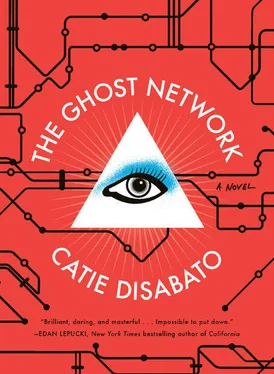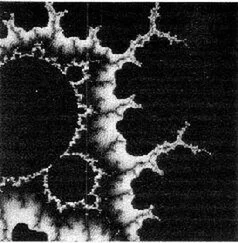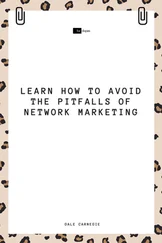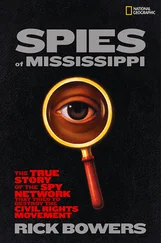“But he wasn’t intimidated, he was in mourning for his whole life. I found that out later, when he snapped out of it and we really became friends. Most people would’ve stayed in bed, but he dragged himself out to these parties. He wanted to be around the living, I guess.”
Haskal encouraged Berliner to write about maps and architecture, and use his semi-infamous name to get published. Berliner wrote one essay; it was about the city as it was used by Christopher Nolan in the movie Batman Begins and it was called “Modern Urbanism’s Tabula Rasa : Destroying and Rebuilding Gotham.”
In the 2005 reboot of the Batman movie franchise, director Christopher Nolan and his producers decided to film the movie in Chicago (rather than New York), letting the Second City stand in for the fictional Gotham City. Until Batman Begins started filming, New York had been Gotham for so long that the cities were interchangeable; comics artists that depicted the city drew New York-esque skylines, and New York was nicknamed Gotham. Nolan’s decision to move Gotham from New York to Chicago destroyed and re-created an entire city.
Architects that subscribe to modern urbanism aesthetics and ideals would approve of Nolan’s recast of Gotham. Modern urbanists tend to “create tabula rasa for the building of cities without memory.” bCities without memory have no history. In moving Gotham to Chicago, Nolan was attempting to create a Gotham untainted by New York City. c
Despite the article’s faults, Esquire magazine published the piece on its website. d
The Columbia crowd didn’t make an artist out of Berliner, but he helped make an artist out of Haskal. He helped style her best work: animated gif portraits of all of her friends in party settings, looking beautiful and excited in early frames of the gif, but quickly transitioning to the grotesque with only slight tweaks in the framing of their faces. Haskal credits Berliner with helping her during “a very adolescent time in my development as an artist.” As with all of Berliner’s close friends, she remains fiercely loyal to him.
Berliner also let his grandmother, Helen Raulson, find him a job as a clerk in a shop that sold historical maps. The owner, Abraham Shapiro, was an old friend of Raulson’s and, unbeknownst to Berliner, her former clandestine lover. According to Shapiro, nothing was more sexually transgressive and therefore stimulating to Raulson than a tall, muscular Jewish man. Shapiro acted like he was doing Raulson a favor, but he was actually happy to give the front of the shop to Berliner and spend all his time in the back room, buying, cataloguing, and pricing maps. Shapiro had never married and once told Berliner that he was a lifelong bachelor because he was “a hit with the Shiksas but never managed to get a proper Jewish girl in the sack.” e
Most of the time, Berliner stood alone at a glass counter, drafting the blueprints for his perfect apartment or reading non-fiction books about mapmaking and the Age of Exploration. He discovered that if he was knowledgeable about the maps, he didn’t have to be nice to the customers. His favorite maps, the Edge of the World maps, sold well. f
Berliner worked in the shop for a year and a half, trying to forget the problems in his past. He learned the names of the map collectors. He occasionally dated a girl for a few weeks or a few months. He visited Kraus in prison. For a long time, nothing happened to him and he started to believe that all the excitement in his life had already passed; that, like a star athlete, the drama of his life took place entirely in his youth. But then, on a quiet Saturday morning in June, Molly Metropolis walked into his shop.
Molly was only sixteen during The City of Chicago vs. Marie-Hélène Kraus , and though she had appreciated the sensationalism of the trial, she hadn’t focused on the specific details of the case until her first year at U of C, when she took a freshman seminar called “Modern Law and Fiction.” She studied Kraus’s case during her second week as a college student and it made a dramatic impression on her. Her obsession with the case led her to the Situationists, to Antoine/Antoinette Monson, to Berliner. She fixated on it for the rest of the semester and wrote about it for her final paper. After she decided to leave U of C to pursue a career as a singer, she sold all of her textbooks and trashed all of her notes, except for the ones about Kraus’s case. During the thirteen months between dropping out and being signed by Harmony Records, her first record label, Molly continued to research the New Situationists. When Harmony dropped her without putting out an album, she decided to take her New Situationist research to the next level. She mined her old school contacts, canvassing poli-sci and architecture majors about the New Situationists. She read in a Chicago Tribune article that the “last member of the New Situationists” was living in Chicago, working at a store selling old maps.
Once Molly found Berliner, she didn’t waste any time. Molly walked into the cartography shop wearing a pair of huge sunglasses and a black T-shirt with a very, very deep V-neck that showed off chunks of her rhinestone-encrusted bra. Though she wasn’t yet famous, she already looked like a mega-watt pop star on a morning stroll. Without a glance at the maps on the wall, she sauntered over to Berliner’s counter. Berliner knew exactly what she wanted. Since the trial, he had warded off journalists, historians, and the fanboys and fangirls of the New Situationist movement. Berliner wanted to show Molly the door but, true to form, she refused to walk through it.
In our interviews, Berliner was often hostile, coldly detached, frustrated, monosyllabic, nicotine-deprived, or unwilling to answer questions without providing a reason for his unwillingness. In short, he was the opposite of everything an interviewer hopes their subject will be. So, when I asked him about the early months of his collaboration with Molly Metropolis, I expected we would play our usual game of frustration and reluctance. I was wrong. He put away a cigarette without smoking it and said, “We’re finally going to talk about Metro? I was beginning to think you didn’t give two shits about the person who is responsible for everything.” g
The first story Berliner told me about Molly was delightfully characteristic: “The first thing she said to me, I mean as she was shaking my hand, was that her name was Molly Metropolis and she was going to be a pop star. ‘But that doesn’t matter right now,’ she said. ‘What matters is you.’ I knew immediately she was referring to the [New Situationists]. At that time, there were only two things people talked to me about, and I could tell immediately that she didn’t want to buy a map. Of course, in a way, I was wrong about that. She had me make her dozens of maps.”
When Berliner met her, Molly hadn’t completely evolved into the public figure she eventually became, but she was a primordial version of that figure. She dressed in metallic clothing and directed the people around her like they were members of her staff. She also refused to take no for an answer; two days after Berliner told Molly he didn’t want to work with her, she came back to the cartography shop and propositioned him again. Work with her, and she would give Berliner the money to build his apartment. Berliner cautiously asked her how she knew about his apartment and she told him that she had followed him to the Chicago Public Archives where his sometimes-girlfriend, Nina Johnson, worked and had discussed it with her. Molly later confessed to Berliner that this was a lie; she had actually visited Kraus several times in prison, winning Kraus’s trust, and learning about the apartment from her. Not wanting to betray her new friend, Molly blamed Johnson. Berliner had unfortunately broken up with the confused archivist on the weight of Molly’s lie. Berliner made a point to find Johnson and apologize once he learned the truth, and managed to salvage the relationship, somewhat. h
Читать дальше












